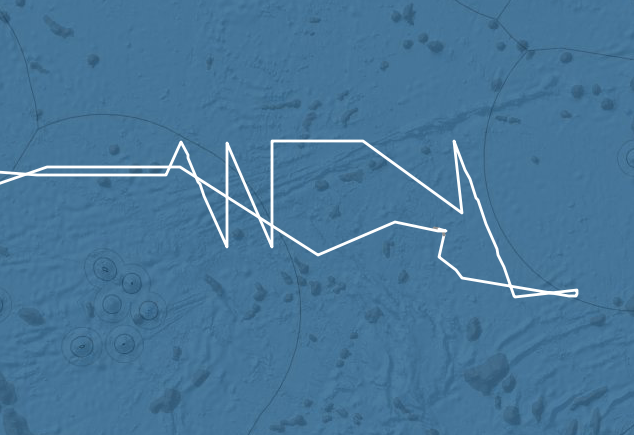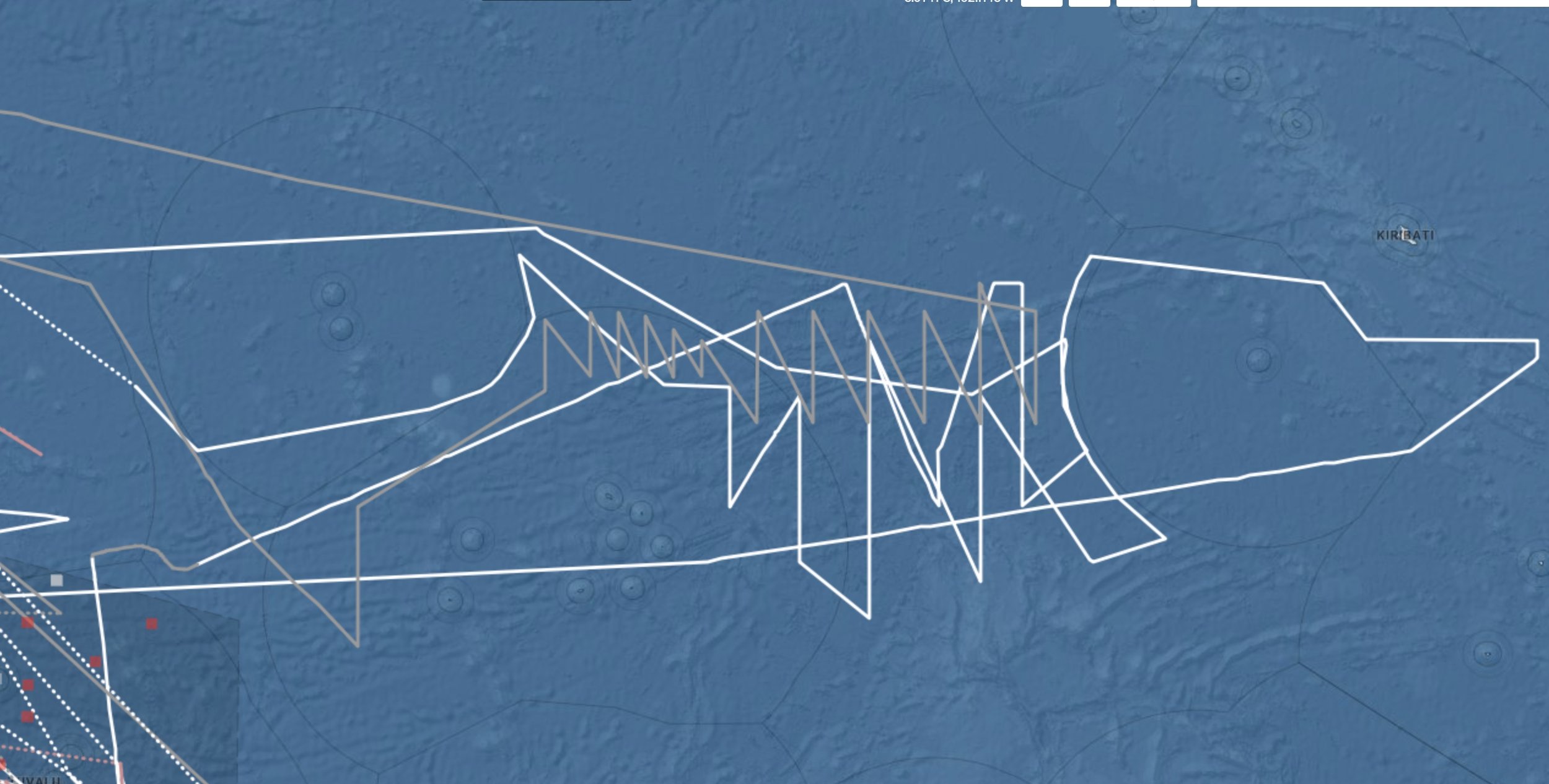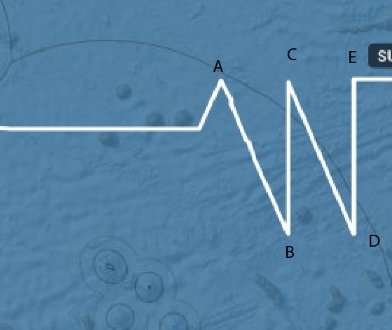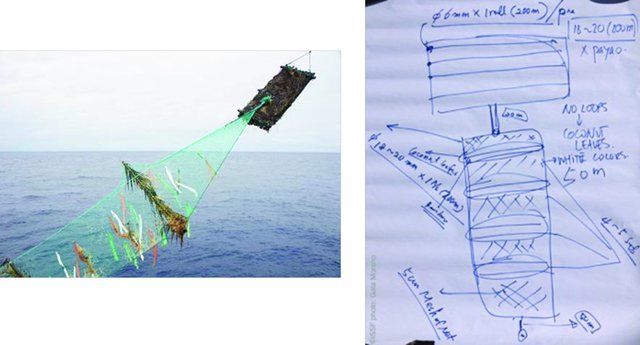Back in November last year, I was talking to a friend that is a fishing master on a Purse Seiner around here in the Marshall Islands, in regard to the work I had been doing with starboard.nz, I was showing him the capabilities of the system, and we started analysing the “strange” movements of a carrier (Sun Flower 7), as you can see below:
Why would a carrier do that? For both of us the 1st reaction was the same… its dropping FADs… but then the former Search and Rescue guy in me was… could it be like a search pattern? I checked it with the local seaptrol and it wasn't a SAR call for that area
It was interesting to note that they started doing that pattern in the EEZ of Kiribati… so I went back in the system to find another vessel doing similar stuff…
In fact then I foud quite a few more and all related to the same country of owership (Korea) even if flagged to other usual open regiestries… and yes I adviced the right people… and Starboard started developing and algorithm to pick up that behavior
So I talked to a few captains, show them the patterns and they all agree with the FAD setting behaviour.
Why is this an issue?
A carrier deploying FADs is considered as fishing under the FFA HMTCs but, most importantly: the WCPFC Convention.
The WCPFC Convention's definition of fishing includes the deployment of FADs
(iv) placing, searching for or recovering fish aggregating devices or associated electronic equipment such as radio beacons;
So in principle, if deploying FADs, that carrier was fishing, which it is not licensed to do. They are only licensed to pick up fish and pass provisions and materials (that may include FADs) but not to deploy them on behalf of FVs (as deploying FAD is part of fishing as defined in the WCPFC convention).
So even if it does not have a net, is fishing by definition while dropping and activating e-FADs on behalf of Purse Seiners (at a charge)
We could not do anything here in Majuro, since the vessel wasn't coming into port… Both Pohnpei and Honiara did not pick up on it since their PSM are incipient and usually focus on Purse Seiener's behaviour… and not on carriers.
So when realising that the vessel was going to Bangkok… I sent all the info I had, and I knew they would pick up on it
And so they did.
Back in 2016 and 17 worked in Thailand, helping with the yellow card that the EU dropped on them, particularly with the set-up of their PSM and the traceability and fish accountability system from landings to exports. So I have maintained good relationships with some people there, particularly with a VERY nice, clever and committed Thai-English friend working with, whom I have been communicating throughout the whole process, particularly in terms of providing operational knowhow to discredit some of the excuses the vessel captain was providing.
Interestingly the captain was arguing that they were retrieving FAD and not setting them… in fact he argued “verbatim: I consider the floating objects, including, buoys floating as marine debris. Collecting buoys by the crews will support and protect the resources and the Ocean.”
I think is an interesting defence… we are not dropping them, we are picking them up… yet how you prove one or the other? in any case, both are defined as fishing as discussed above)
Well, having an independent observer programme in all carriers would help… the WCPFC is the only RFMO without one (I wrote about it here).
Yet as a fisherman, you know what a vessel can do and how it operates.
How do you collect whole FADs (they are not small) at 10kts constant and navigate in geometrical patterns and straight lines? In what perfect weather universe FADs are at constant perfect drift at the same longitude and latitude after who knows how much time at sea?
Why would they go from A to B if they are retrieving.... and then to C and then to D... if A and C are closer… fuel is gold at sea.
The captain argued that he was picking them by reducing the speed to 3 knots (but this is not evident nor in the AIS record).
He said they had 2 teams, 1 at the bow and 1 at the midship. 3 crew per team. They used a rope with hooks to haul them up on deck… the eFAD sounder (the only valuable bit of the whole FAD is tied up to the FAD main body), so they will have to bring it all on board… a wet FAD could be anything above 100 kg… and they lift them on board?
And if so… what did they do with the rest of FAD after that? They argue that they transferred the buoys to 2 Purse Seiners (so they discarded the rest of the FAD overboard?) That is a MARPOL violation per se.
They showed some made-up receipts from 2 vessels for the 24 FADs buoys they allegedly collected, saying that they missed many… but then how they knew when picking them up is a straight line that those FAD would belong to those 2 boats only? And they had no records of the made and serial# of the FADs delivered.
When questioned that the Purse seiners know the position of the FADs perfectly, they have Inmarsat D+ or Iridium (depending on the brand) transmitting positions every hour or less... so the PS can pass the position to the carrier constantly, and therefore they could go straight to the positions. Then the answer was that the FADs weren’t transmitting anymore, which brings us back to the question… how they knew winch ones of the 2 vessels to pick up… otherwise, they are just stealing random FADs?
Image of a Korean style FAD Source here
Furthermore., at that speed, if you recover something from the water, particularly a whole FAD set up, until you bring it to the deck, it will drag by the side of the vessel, and by physics get underneath and even if you cyut off, the main body of the FAD will be minced by the propeller of the carrier or worst getting tangled on it.
Nothing in that recovery scenario makes any absolute sense.
Interestingly it looks like the Korean Fisheries Monitoring Centre was arguing that under WCPFC CMM 2009-02 para 6: A FAD and/or associated electronic equipment may be retrieved by a vessel during the period of a FAD closure if the FAD and/or associated electronic equipment are retrieved and kept on board the vessel until landed or until the end of the closure. Interpretation: no violations because the vessel (Sunflower7) kept the collections until landing.
Yet again, under the WCPFC convention, the retrieving of FADs is fishing… and a carrier is not licensed to fish… furthermore, the FADs weren't kept on board. Nevertheless… it shows an area that where clarification may be needed at WCPFC technical and compliance committee.
From a fisheries MCS perspective, this is also interesting because the fish on board was loaded after the FADs event, so it may be perfectly legal (that was the job of the PSM work of FSM and Solomon Islands, where the carrier got fish from transhipping Purse Seiners), yet what is evaluated here by Thailand are the actions of the vessels before receiving fish, so I guess this is one for the lawyers to argue.
Anyway… I was absolutely stoked when I was informed yesterday that the carrier was denied port use in Bangkok and seemed to be heading north… Now wherever this vessel go will be a test to a few assumptions of IUU fishing… if it goes back to Korea and they don't do anything, this is pretty bad in terms of their obligations under FAO PSMA (they are a party to that agreement)… and denying port use is a big deal… so keeping an eye on it.
News on the port use denial are just coming in media in English, you can see a google translation here from a Thai news site, and a bit from Thai TV below
This is good news… my role in this saga was minimal; I just found it, analysed it and passed it to the right people. I’m no one at the enforcement level. This is proof that cooperation works and things happen when a government like Thailand puts their foot down… we need more of that by more governments. Congratulations, and thanks to all involved!
Update 23/3, this is now very oficial… this is the 1st time i see a port use denial under PSMA, and being communicated to the WCPFC… this is big





